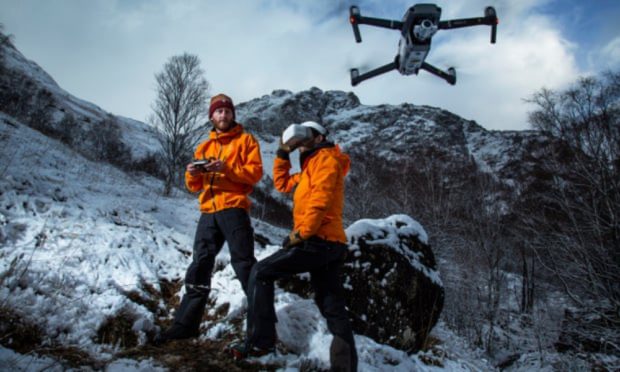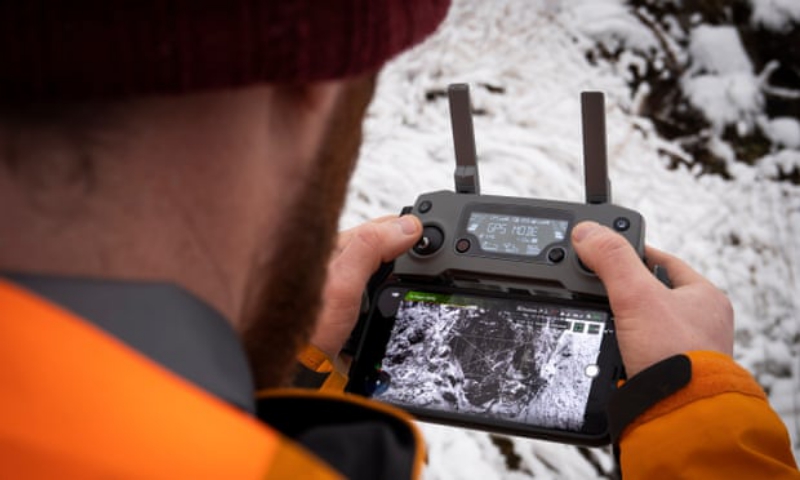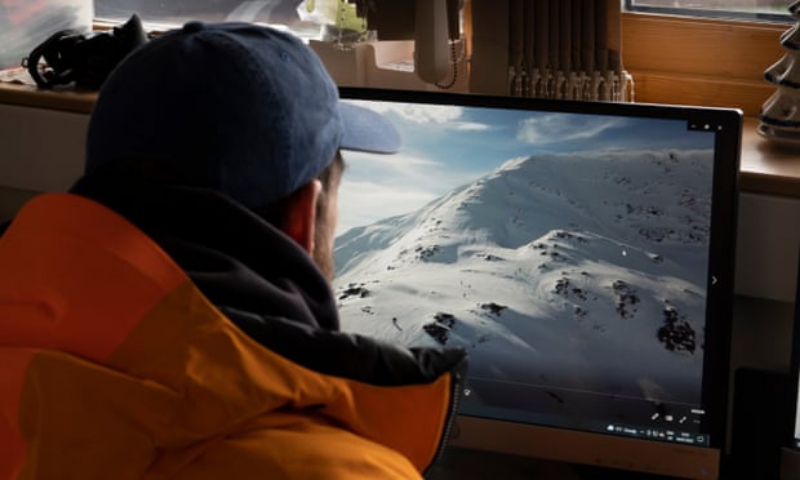Scotland’s mountain rescue teams have begun using sophisticated drones to search for injured and missing climbers lost in often dangerous and isolated terrain across the Highlands.
The drones, weighing just under a kilo, can be fitted with torches, heat-detecting cameras, loudspeakers and even radio handsets, enabling rescuers to search inaccessible gullies and remote areas more quickly and safely than before.
The technology has been quickly taken up by Scotland’s 28 volunteer rescue teams over the last year, helping in recent searches for casualties and missing people on Ben Nevis, the southern uplands, in Fife and the Trossachs.
Drone experts believe the devices could soon act as emergency mobile phone masts, providing coverage deep in the mountains, over moors and remote coasts, allowing rescue teams to detect signals from missing walkers or link up rescuers in mobile dead zones.
“The drones are definitely an asset, there’s no doubt about it,” said John Stevenson, a team leader for Lochaber mountain rescue team in Fort William, which covers Ben Nevis and now operates four drones. “We’re putting drones into places where years ago we might have thought twice about putting people in.”
Tom Nash, the founder of the Search and Rescue Aerial Association Scotland (Saraa), a charity that trains drone pilots, said the technology had the potential to transform rescues and search operations. In 2020 the 24 teams that were members of Scottish Mountain Rescue had 671 callouts.
“Risk reduction is a key use of a drone. Previously where someone has needed to do a rope rescue or a stretcher lift, you would have some poor person dangling over the edge of a cliff, roped back, peering over saying ‘I think we should put the rope down here’,” Nash said.
“Well now, just put the drone 20 yards out the other side of the cliff and look back, you can see where the casualty is. And our rope experts can say ‘our safest rope line is here down to here’. You can floodlight that at night. We can put a speaker on and if we know it’s going to be a while, we can speak to the casualty and say help is on the way, ‘give us a thumbs up if you’re OK but can’t move’. That’s a really critical use.”
A former RAF Tornado navigator who became a commercial drone operator, Nash has helped train 15 volunteers with eight rescue teams across Scotland to become qualified drone pilots. Saraa has six operational drones of its own and in 2020 had four callout requests for drone support; in 2021 that jumped to 15. Separately, rescue teams such as Glen Coe and Lochaber have their own equipment.
Nash and Stevenson said there were limitations: drones cannot be used in rain, snow or fog. There are legal height restrictions and they are limited currently to line of sight, meaning a pilot has to be able to see the craft.
Rescue teams also, at present, keep their drones on the ground if a search and rescue helicopter is involved. But Lochaber has learned they can be programmed to carry out systematic searches across a hillside far faster than a search team on foot, allowing rescue coordinators to study the footage back at base.
“They’re terrific. You can get a bird’s eye view of where you are,”
said Stevenson. His team had seen them used by French rescue teams operating on Alpine ski slopes.
Nash said their roles could expand as pilots’ skills and the technology improve. Nash said they could copy the communications firm OpenReach, which uses drones fitted with 4G phone equipment to “drape” mobile coverage over a large area when phone masts are out of action. In time, drones could be able to deliver supplies and equipment to casualties or rescue teams in difficult terrain.
“It’s so exciting because it can and will revolutionise things,” he said.
Top Photo:Mike Smith (right), chief drone pilot, and Jim Cooper, trainee drone pilot, of Lochaber mountain rescue teamAll Photos: Murdo MacLeod/The Guardian
Source: The Guardian



